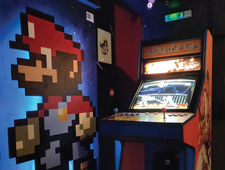Setting up a dgamelaunch game server
A Blast from the Past

© Photo by Kevin Borrill on Unsplash
If you are into retrogaming, dgamelaunch lets you set up a server to play Roguelike games and compete with friends, all while preserving a piece of gaming history.
In the early '80s, Rogue, a game that would overhaul the gaming world, was released. According to Roguelike Gallery, Rogue first ran on a PDP-11 machine running Unix v6 [1]. Primitive by today's standards, Rogue popularized the Roguelike genre despite not being the first game of its kind. Rogue's influence can be seen in modern commercial titles. Rogue's source code is still available, as are many games that pre-date Linux.
In this article, I show how to set up a server to host antique terminal games. Why would you want to do this? Besides preserving a piece of history, playing these games is fun despite their age. In addition, running games on a specific server allows you to keep scoreboards, letting you compete against friends on a shared server. Last, but not least, setting up a game server is an instructive exercise.
Service Architecture
This article assumes you are using Debian, which unlike early 16-bit Operating Systems, is capable of using modern connectivity protocols.
[...]